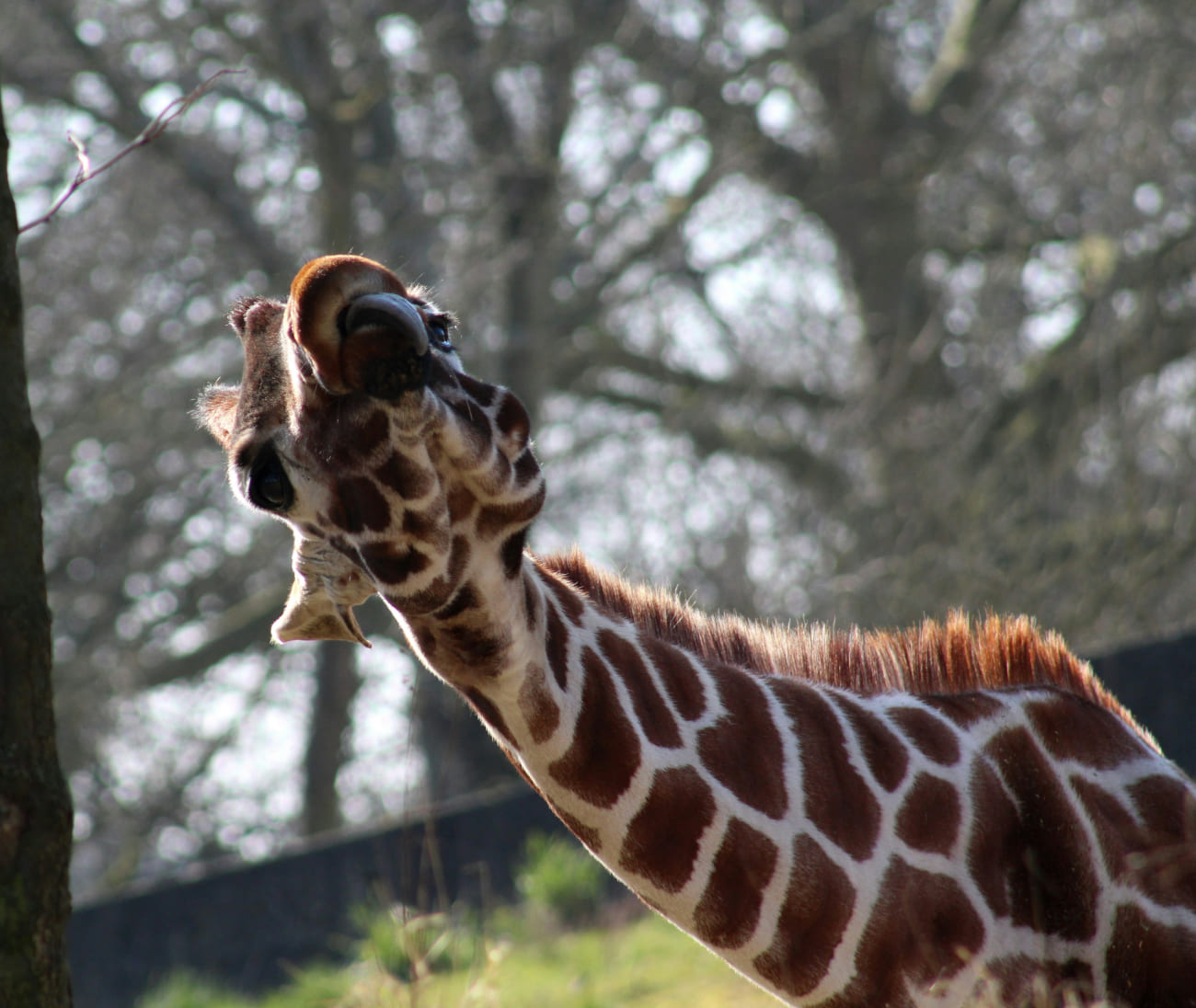The Reticulated Giraffe, known for its intricate web-like coat pattern of white lines against a reddish-brown background, is one of the most iconic creatures of northeastern Africa. Its tall stature, reaching up to 18 feet, allows it to browse on treetops, particularly acacias, which are its primary food source. With a long, prehensile tongue measuring up to 18 inches, the giraffe is uniquely adapted to navigate thorny branches while feeding.
Despite their size and strength, reticulated giraffes are gentle and social animals. They live in loose herds, with members often coming and going freely. Mothers are particularly attentive, staying close to their calves to protect them from predators. These peaceful giants spend most of their day feeding, consuming up to 75 pounds of leaves daily, while their long necks provide a unique vantage point to detect predators from afar.
However, the reticulated giraffe faces numerous challenges. Habitat loss, human-wildlife conflict, and poaching have significantly reduced their populations, leaving only around 15,000 individuals in the wild. Conservation efforts focus on creating protected areas and raising awareness to ensure these magnificent creatures continue to grace the savanna for generations to come.
6J39+Q7R, Khirkhiri, Parasiya, Madhya Pradesh 480571, India +927673892931 [email protected]




